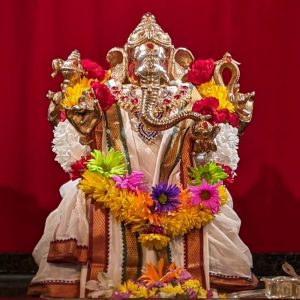Deepavali: The Festival of Lights
Deepavali, also known as Diwali, is one of the most celebrated festivals in India and across the world. This vibrant festival symbolizes the triumph of good over evil, knowledge over ignorance, and light over darkness. The name “Deepavali” originates from the Sanskrit words “Deepa” (lamp) and “Avali” (row), which means a row of lights. On this auspicious occasion, homes, temples, and streets are beautifully adorned with oil lamps (diyas), candles, and decorative lights to mark the victory of light.
The Legend of Deepavali
Deepavali is celebrated for different reasons across various regions of India, with the most well-known story being the return of Lord Rama to Ayodhya after 14 years of exile. According to the epic Ramayana, Lord Rama defeated the demon king Ravana and returned to his kingdom, where people lit lamps to welcome him. This event symbolizes the victory of righteousness and the defeat of darkness and evil.
In other parts of India, Deepavali is associated with the worship of Goddess Lakshmi, the deity of wealth and prosperity. It is believed that she visits homes to bless devotees with prosperity and success. For others, the festival commemorates Lord Krishna’s victory over the demon Narakasura, marking the end of tyranny and the beginning of hope.
The Five Days of Celebration
Deepavali is traditionally celebrated over five days, each day having its own significance:
- Dhanteras: The first day of Deepavali, when people clean their homes and buy new utensils, gold, or silver as a sign of welcoming prosperity.
- Naraka Chaturdashi: Also known as Choti Diwali, this day commemorates Lord Krishna’s victory over the demon Narakasura.
- Lakshmi Puja: The third day is the main day of Diwali, where Goddess Lakshmi is worshiped. Families come together to perform prayers, exchange gifts, and enjoy festive meals.
- Govardhan Puja: On this day, people celebrate Lord Krishna’s protection of his devotees by lifting the Govardhan Hill.
- Bhai Dooj: The final day celebrates the bond between brothers and sisters, where sisters pray for their brothers’ well-being, and brothers give gifts to their sisters as a token of love.
Traditions and Customs
During Deepavali, families engage in a variety of customs and activities that are meant to spread happiness and joy. These include:
- Lighting Diyas: The lighting of clay lamps is a significant ritual that symbolizes the victory of light and knowledge.
- Bursting Firecrackers: Fireworks are an integral part of Deepavali celebrations, symbolizing joy and warding off evil spirits.
- Rangoli: Beautiful patterns and designs made with colored powders are created at the entrances of homes to invite prosperity and happiness.
- Feasting: Sweets and festive foods such as laddoos, barfis, and chaklis are prepared and shared with family and friends, adding sweetness to the celebrations.
- Exchanging Gifts: Families and friends exchange gifts as a way of sharing joy and blessings.
A Festival of Togetherness
Deepavali is more than just a religious festival—it is a celebration of togetherness, unity, and community. The festival brings people of all backgrounds together to celebrate love, joy, and positivity. It serves as a reminder that no matter how dark or difficult times may seem, the light of hope and goodness will always prevail.
Let this Deepavali bring light, happiness, and prosperity into your lives. Happy Deepavali!
Program:
6.30 PM – Samoohika Dhanalakshmi Pooja
7.30 PM – Sarva Devata Aarti
7.45 PM – Prasad & Fireworks

